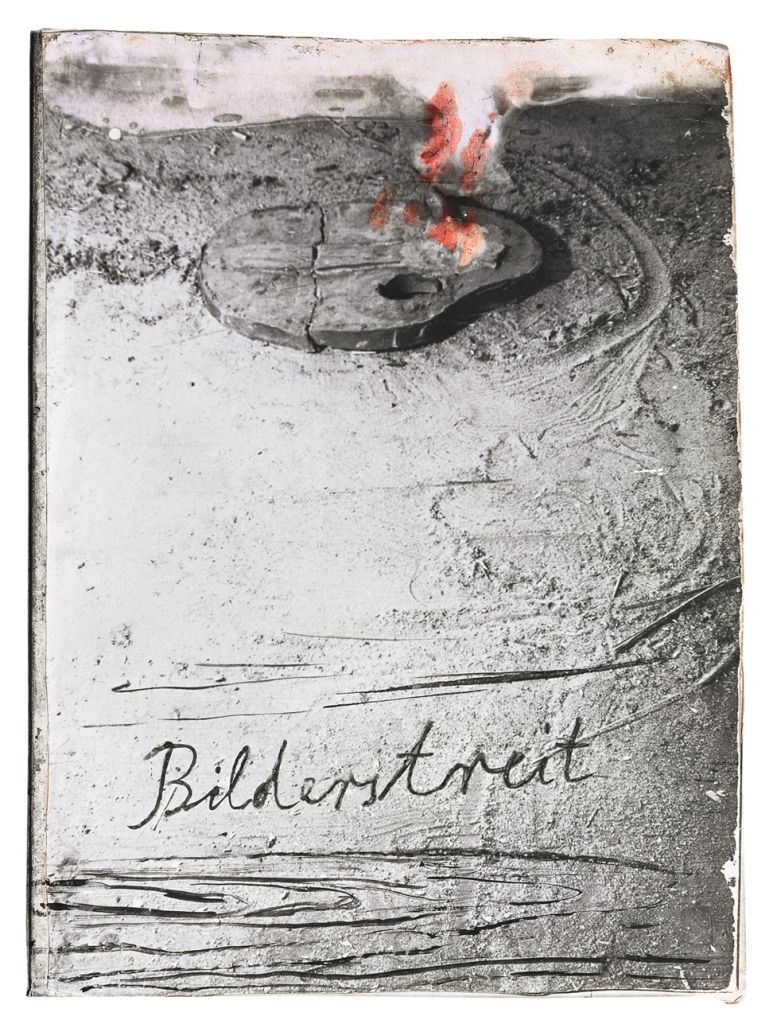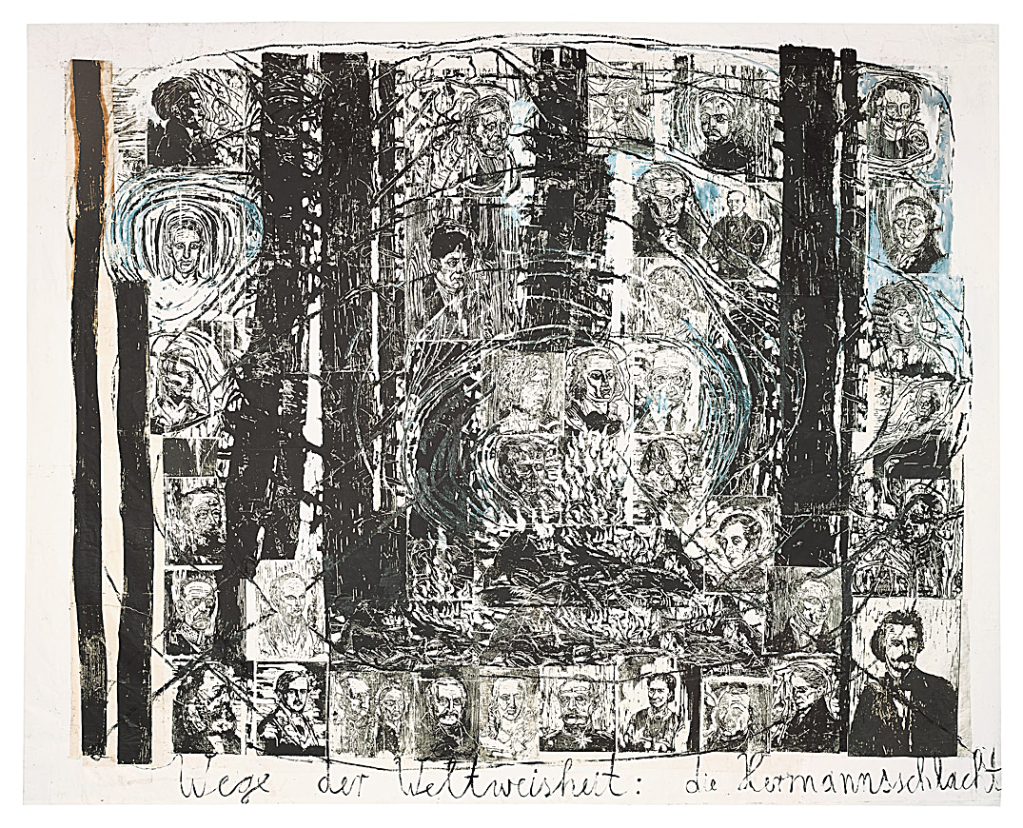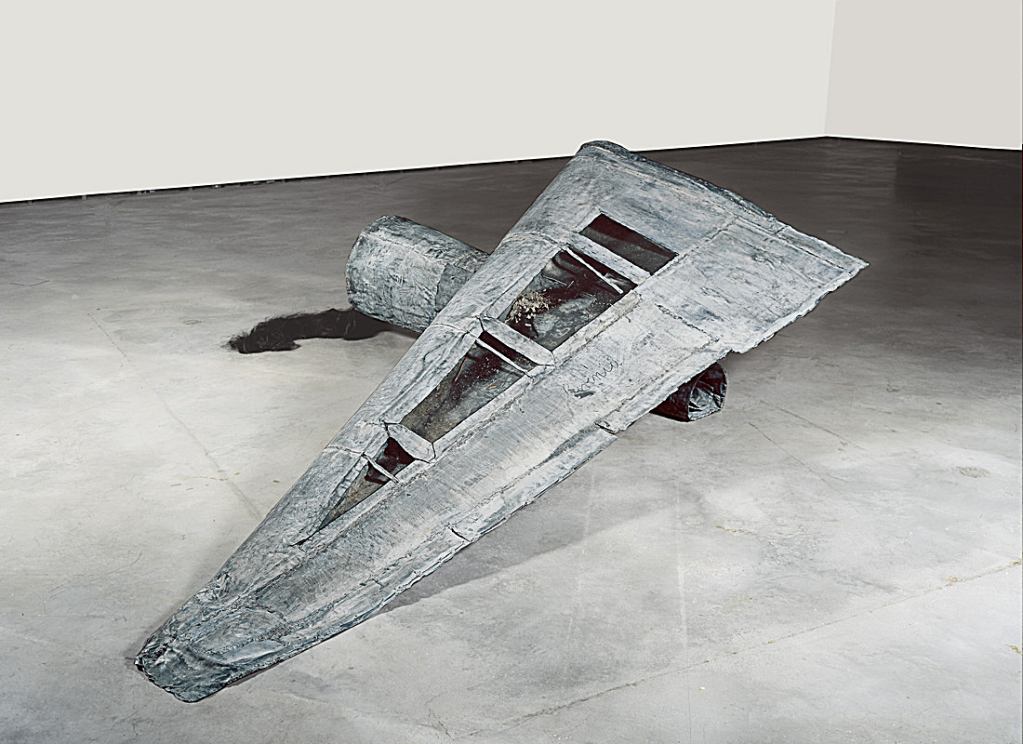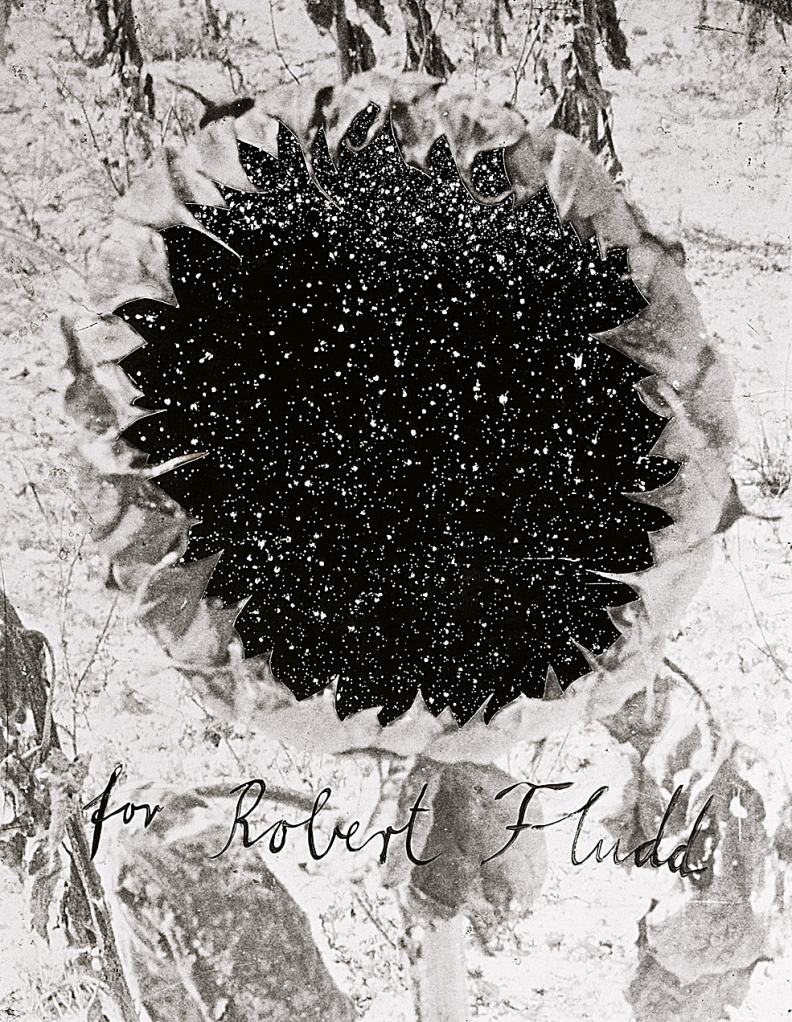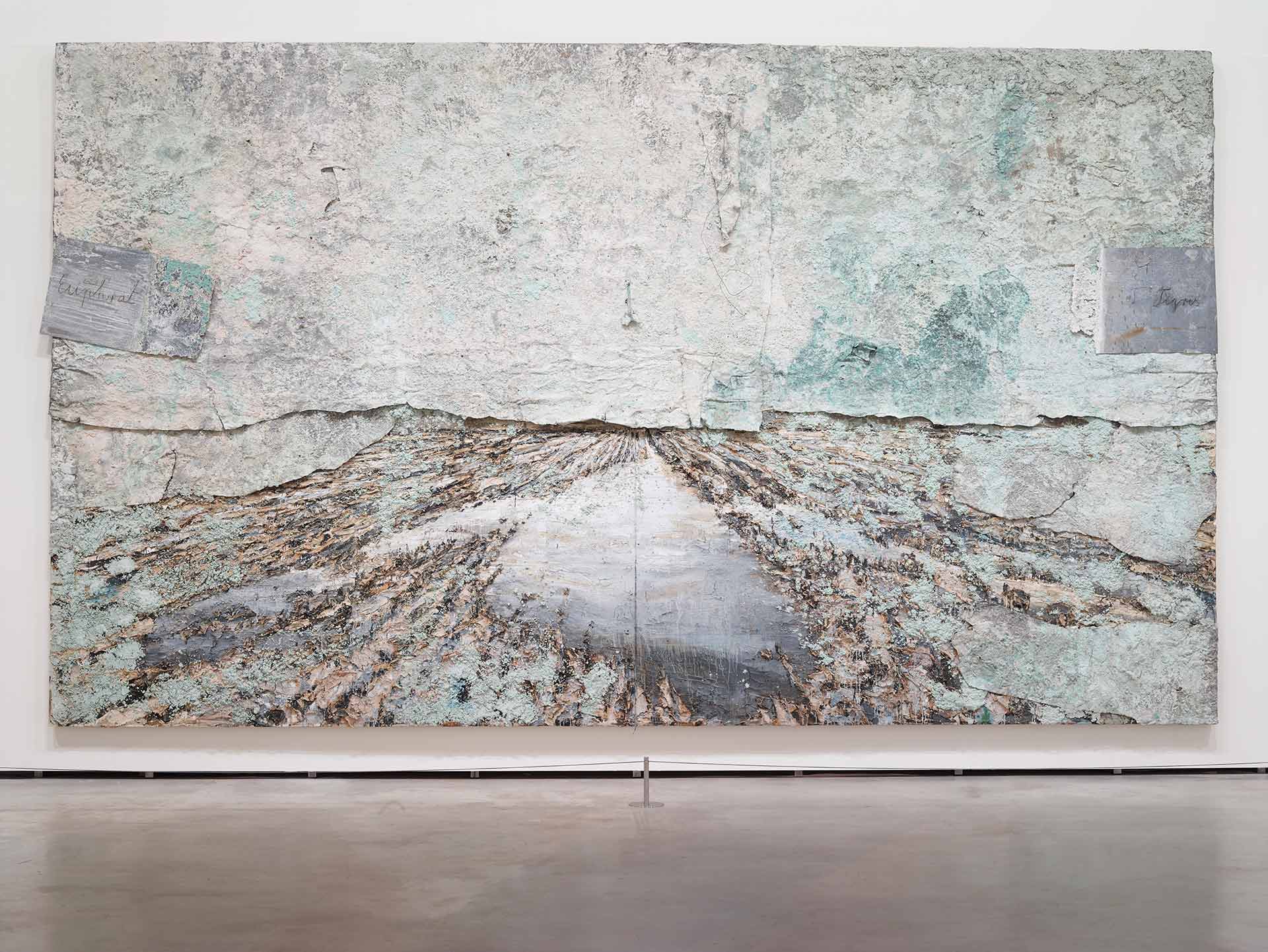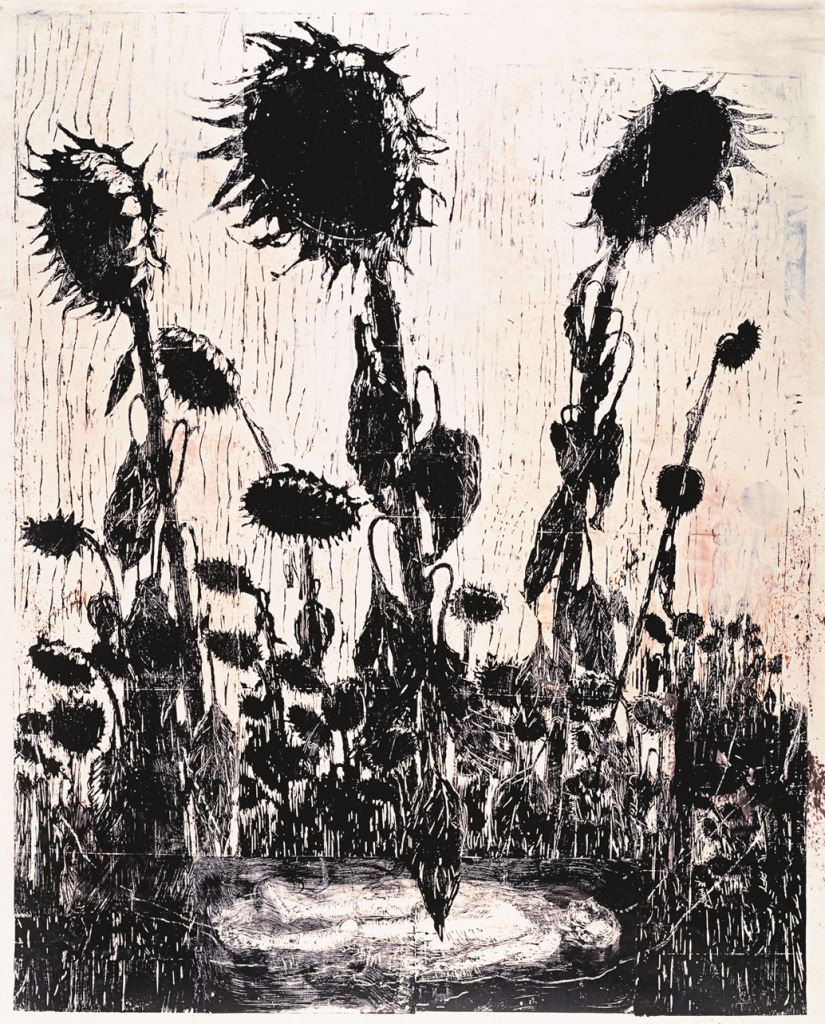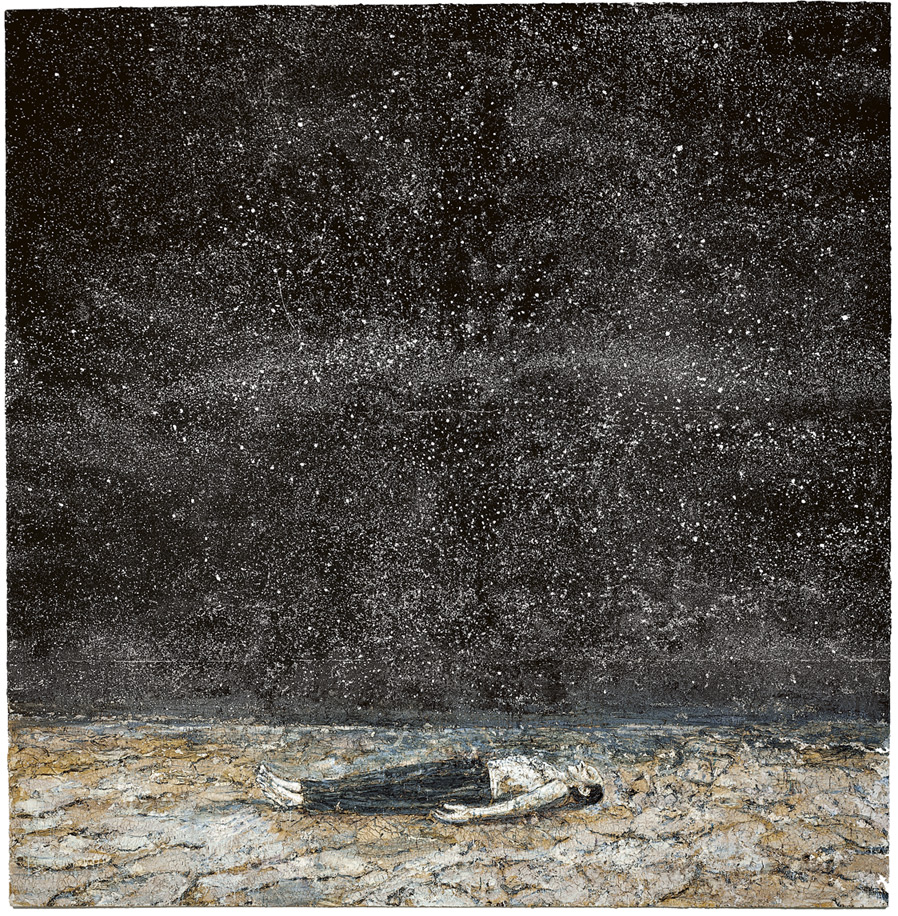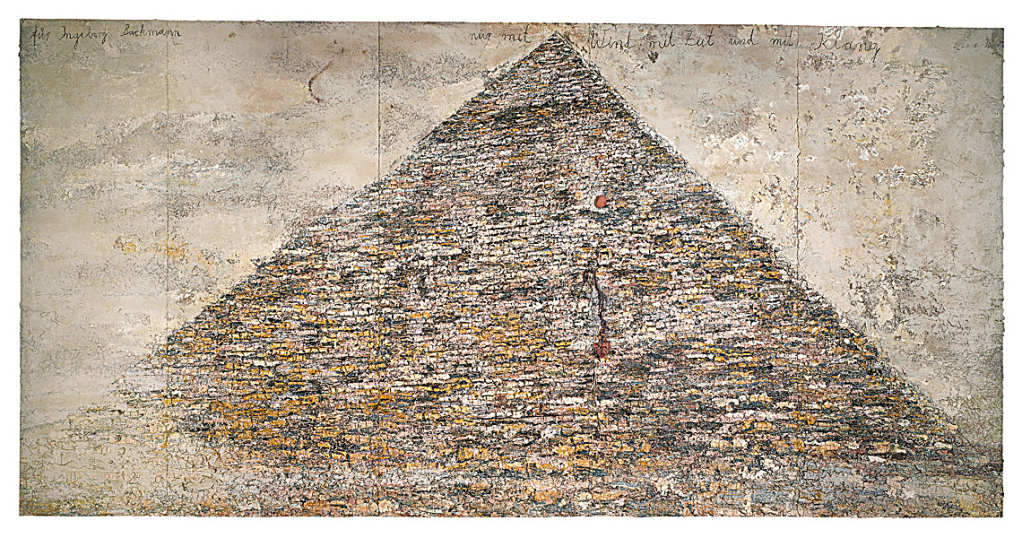Gilgamesh and Enkidu in the Cedar Forest II
1981Oil, acrylic, emulsion, and shellac on original photograph over cardboard57 x 43 x 12 cm, 46 pages
Born in Germany just months before the final European battle of World War II, Anselm Kiefer grew up witnessing the results of modern warfare and the division of his homeland. He also experienced the rebuilding of a fragmented nation and its struggle for renewal. Kiefer dedicated himself to investigating the interwoven patterns of German mythology and history and the way they contributed to the rise of Fascism. He confronted these issues by violating aesthetic taboos and resurrecting sublimated icons. In one of his earliest projects, his 1969 Occupations (Besetzungen) series, Kiefer photographed himself mimicking the Nazi salute at various sites during a journey through Switzerland, France, and Italy. Subsequent paintings—immense landscapes and architectural interiors, often encrusted with sand and straw—invoke Germany's literary and political heritage; references abound to the Nibelung legends and Richard Wagner, Albert Speer's architecture, and Adolf Hitler. Beginning in the mid-1980s, and especially following his move to southern France in the early 1990s, Kiefer's iconography expanded to encompass more universal themes of civilization, culture, and spirituality, drawing upon such sources as the Kabbalah, alchemy, and ancient myth.
Artist's books have been one of Kiefer's central means of expression since 1968. Unlike many artist's books, which are typically issued as multiples, Kiefer's books are singular, handmade pieces and, in this sense, more like paintings or sculptures. Gilgamesh and Enkidu in the Cedar Forest II (Gilgamesh und Enkidu im Zederwald II, 1981) is one of eight books Kiefer completed between 1981 and 1983. Composed entirely of photographs, this book tells a story based on the The Epic of Gilgamesh, one of the earliest literary and poetic masterpieces. The original epic recounts the adventures of Gilgamesh, the Sumerian king who reigned around 2700 BCE, and his companion, the warrior Enkidu. Despite his work's underlying plot, Kiefer does not offer a linear recounting of the ancient story, but rather isolates specific passages and images, which he then reassembles and recomposes to reflect his personal memory of the Third Reich and German tradition.
Source(s):
Nancy Spector. "Anselm Kiefer." In Spector, ed. Guggenheim Museum Collection: A to Z. 3rd rev. ed. New York: Guggenheim Museum, 2009.
Miguel López-Remiro. "Anselm Kiefer." In Guggenheim Museum Bilbao Collection. Bilbao: Guggenheim Museum Bilbao; Madrid: TF Editores, 2009.
"Anselm Kiefer." In The Permanent Collections of the Guggenheim Museums. Bilbao: Guggenheim Museum Bilbao, 2007.
Original title
Gilgamesh und Enkidu im Zedernwald II
Date
1981
Medium/Materials
Oil, acrylic, emulsion, and shellac on original photograph over cardboard
Dimensions
57 x 43 x 12 cm, 46 pages
Credit line
Guggenheim Bilbao Museoa

